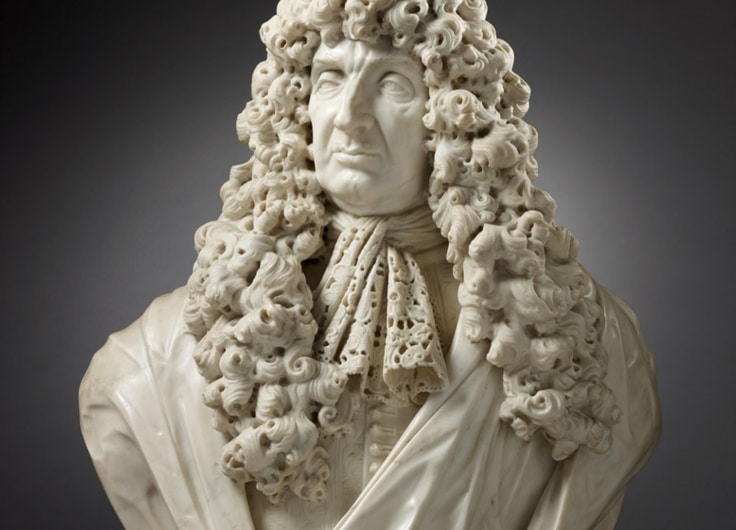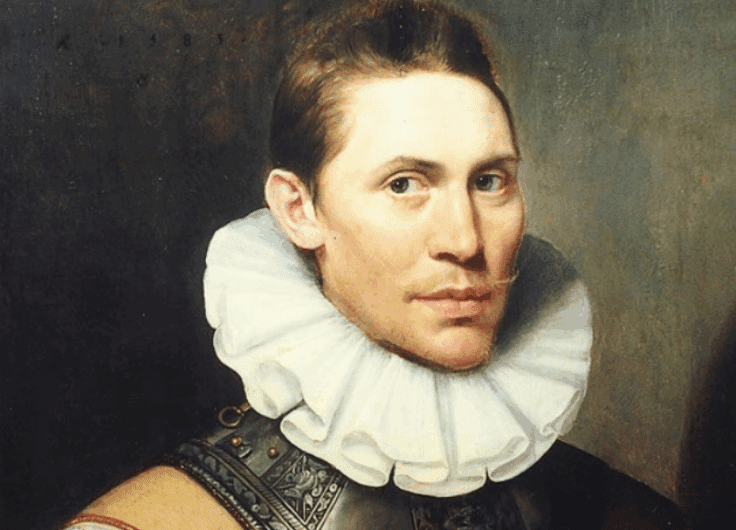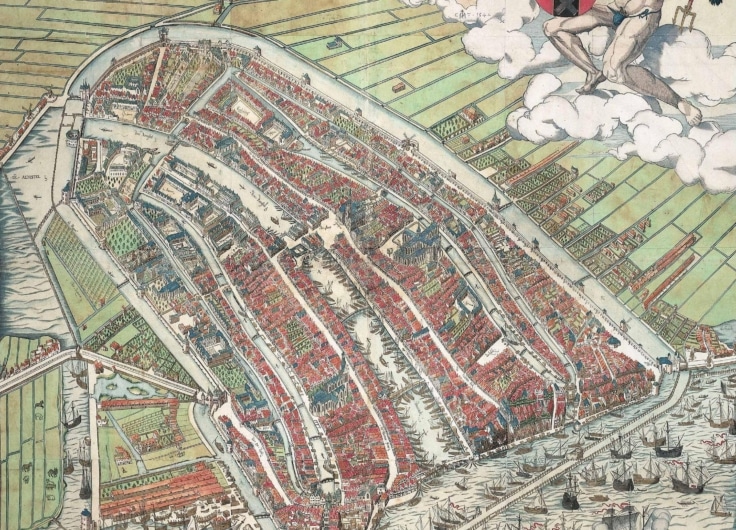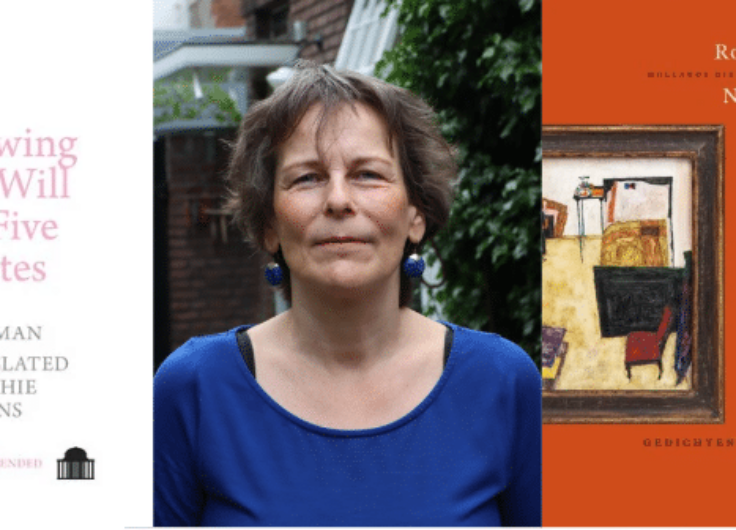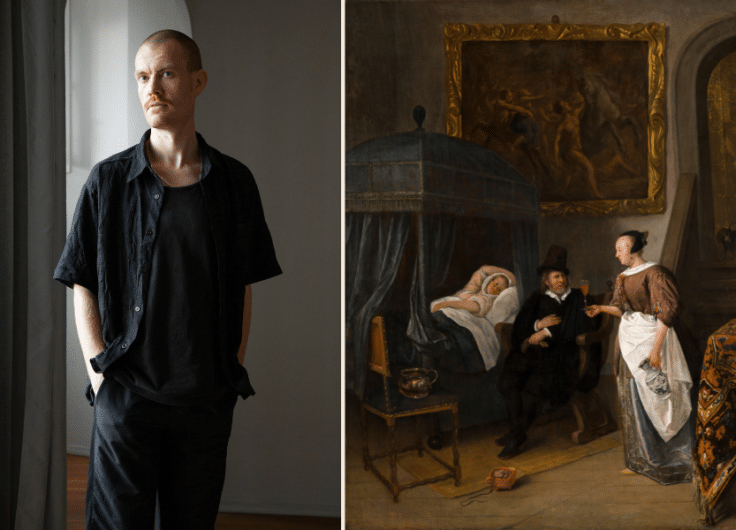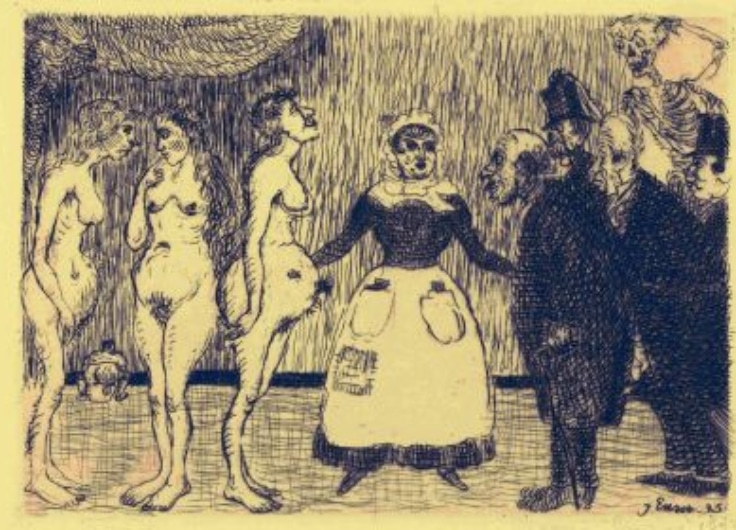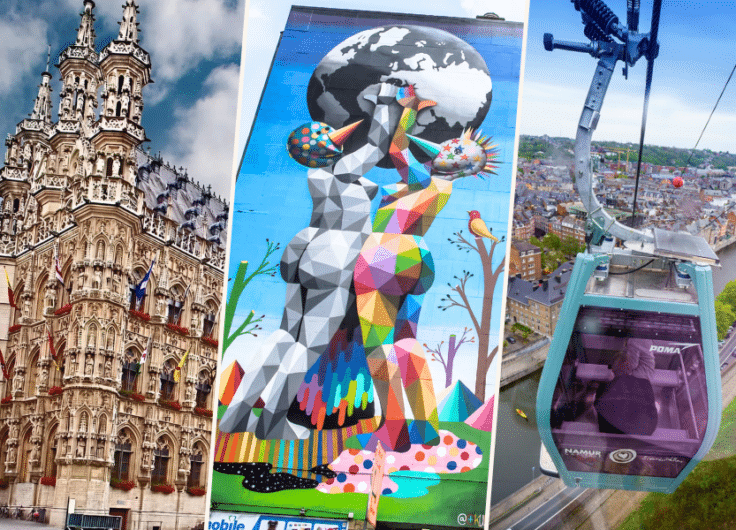Our bond with animals goes back to the earliest human memory. But despite rapidly losing touch with nature, we have also come to cherish animals in recent decades. That doesn’t come without legal, political and social consequences. “We must promptly do away with the idea that humans are superior.”
In the Netherlands and Flanders, cow and pig factory farms are making more headlines than ever; the wolf is welcome again in our region; and in divorce cases, judges are now also ruling in the best interest of the dog. The Brussels Parliament, which does not ban slaughter without stunning, is broadly criticised. In the Central Netherlands, a slaughterhouse that was cruel to cattle was promptly closed. Animal welfare has become a fully-fledged ministerial portfolio in the Flemish government. Clearly, our society has rediscovered the animal.
But this hasn’t always been the case. In Olen, in the wooded Antwerp Kempen, former poacher Leon Van Den Brande – who also made headlines recently – still runs a private museum full of clamps, shears, irons, snares and traps. With these tools, animals were captured or killed, and certainly hurt. Just a few decades ago, a wolf crossing the path of a farmer, shepherd or the aforementioned Leon would have been mercilessly killed. Biologist and author Dirk Draulans is still amazed that in 1972, after years of struggle – and partly due to his actions – bird trapping was banned in Belgium. “Darn it, it’s possible!” Draulans expresses the sense of victory that came over him and ornithological association Wielewaal at the time. “It feels like it was yesterday – but it’s hard to imagine what a nature enthusiast experienced when he encountered farmers or hunters! It’s unfathomable today and shows how mainstream animal and nature conservation has become.”
It especially makes clear how uneasy our relationship with animals has been in the recent past. “A fox that came to steal a chicken farmer’s eggs every day? It had to die, because it cost him money,” says Draulans. “The animal was his competitor.”
Merely machines
And yet, as much as man often felt threatened by animals, when push came to shove, they were little more than objects. “An idea dating back to the Enlightenment, when philosopher Descartes primarily regarded animals as merely machines,” explains Professor of Environmental Law, Hendrik Schoukens (UGent). “Like nature as a whole, the animal was a thing. Man had the usus, the fructus and the abusus over it: the use, the fruit and the right to destroy it. Our legal systems continue to be based on that vision and are rather absolutist in that respect – although fortunately, the tide is starting to turn.”
 Professor of Environmental Law, Hendrik Schoukens (UGent): 'Like nature as a whole, the animal was a thing. Our legal systems continue to be based on that vision'
Professor of Environmental Law, Hendrik Schoukens (UGent): 'Like nature as a whole, the animal was a thing. Our legal systems continue to be based on that vision'Schoukens reminds us that rights are always based on social consensus, and that people only grant legal status to what is familiar or close to them. “Millions of chickens and pigs live in Flanders, but they have few rights because we hardly see them. Because they live in industrial farms, we only see them as a piece of meat on our plate.”
To reinforce his point, the Ghent professor goes back further in history, to the late Middle Ages and the early modern period. “As soon as we could reason, witch hunts and trials against animals also started taking place in Western Europe. Just as things can go amiss today if a dog bites a child, in the past things could also go wrong with a pig – an omnivore that was prevalent in the yard and lived very close to humans. If that pig had wreaked havoc, it would have been condemned and killed.”
To clarify, our newfound closeness to animals doesn’t, of course, mean they risk being in the dock again. But they are well on their way to acquiring a more solid legal position. “You have legal subjects and legal objects,” says Janneke Vink, author of the book The Open Society and its Animals (Noordboek, January 2023) and chair of the Dutch Association for Animal Rights, which she co-founded. “For now, animals remain objects, albeit objects with an intermediate status. They do not yet have full legal status, but they are already more than tables or chairs.”
Vink, who has advised both the Dutch and Belgian legislators on animal rights policy, refers to the aforementioned example of the dog and the couple who are separating. “We already had animal protection and animal welfare, but in the last ten years, we’ve seen that animals are also taken into consideration in divorce cases. The judge decides which partner has the means to care for the animal and the time to let it out.”
Human-driven patronage
But how do you give animals a voice, and consequently, also speak for animals? Legal expert Elien Verniers (UGent), who won the vdk bank prize last autumn for her doctoral thesis, Towards New Legal Instruments for Animal Welfare, confirms that animals occupy an “ambiguous legal position”. “But animals can count on defense, even if in a roundabout way. Collective interest groups such as GAIA or Dier&Recht play a major role in this. It is crucial that, in their defense, we consider the intrinsic worthiness of animals, starting with the scientific knowledge found in biology, ethology and veterinary medicine. That way, we can grant animals universal rights which cannot be overruled (such as the basic right to life, for example), but also examine specific needs. Pigs are very social creatures; minks, on the other hand, not at all.”
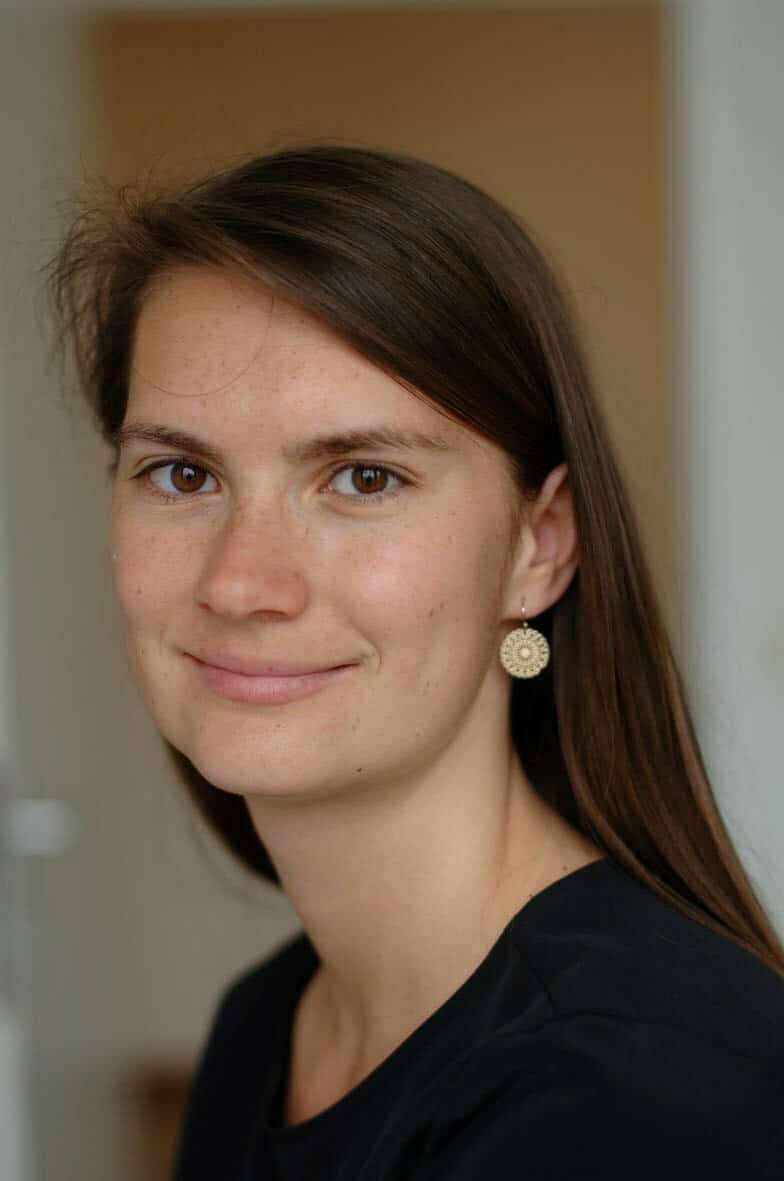 Legal expert Elien Verniers: 'It is crucial that, in their defense, we consider the intrinsic worthiness of animals, starting with the scientific knowledge'
Legal expert Elien Verniers: 'It is crucial that, in their defense, we consider the intrinsic worthiness of animals, starting with the scientific knowledge'“Judges must make full use of the expertise available,” concurs Janneke Vink. “Governments could set up knowledge centres providing state-of-the-art answers to questions from the judiciary, civil servants or ministers. This can range from considering the interest of sheep in the nativity scene on the village square to that of the fox in its biotope.”
Biologist Draulans: “Animals have characters and emotions. They are more intelligent and communicate better with their living environment than we have long thought. Just because we don’t know much about how they communicate doesn’t mean we should exclude them from how we organise life.”
But even then, we are human beings. We think and act anthropocentrically. How close can we get to animals? And how do animal advocates make sure they don’t put their own interests before those of dog Woof or wolf Augustus instead of truly standing up for animals?
“What we don’t want is that those who defend animals become paternalists of sorts,” says Vink. “Look at children’s rights lawyers: we only speak of correct representation if it is evident that the child cannot represent itself; if it is clear that the representative defends the interest of the child and not their own, and if abuse of power is ruled out.”
Verniers agrees that the risk of people-driven patronising is always lurking around the corner, but also puts things into perspective: “It is really possible to keep the defender from the affected and the affected themselves apart. A good lawyer makes the distinction between himself and his client. He defends the latter during the day and goes home in the evening after work. This is not very different from how we defend animals.”
Fleas and centipedes
The increasing legal protection of animals and animal species has not come out of the blue. It is the result of a debate that touches the heart of politics and society, and that also says a lot about people in particular. The ecological insecurity of our era, global warming, collapsing biodiversity, the increased aversion to violence and domination of any kind: it seems as if man has begun to harbour an enormous sense of guilt towards all living things.
“It has to do, among other things, with the fact that people today find it difficult to engage with each other, and therefore project their love onto animals,” fears biologist and author Midas Dekkers. “And there is also Darwin, who has significantly helped to narrow the gap between humans and animals. We have learned that we ourselves are animals. To soothe our own animality, we have given animals extra importance.”
Yet animal lovers and advocates also fall into many categories and subcategories. Some are indeed only out for love and affection. Others are vegan and willing to reconsider their whole lifestyle for the sake of animals. Romantics hope to find their way to a lost paradise that animals might still know, while hunters also claim to respect animals.
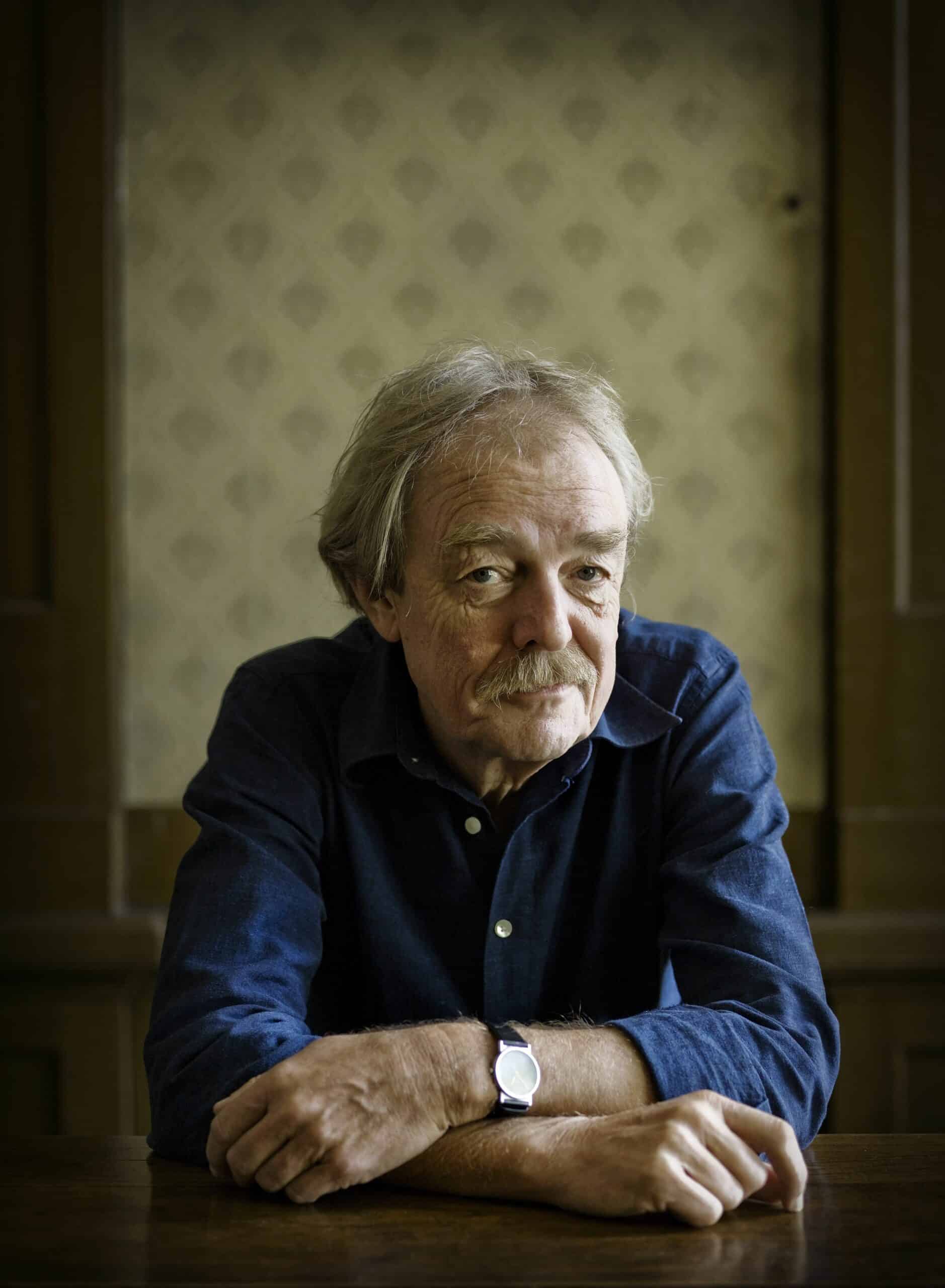 Biologist Midas Dekkers: 'We have plenty to say about pets, but not much to say about the mosquito we just swatted to death'
Biologist Midas Dekkers: 'We have plenty to say about pets, but not much to say about the mosquito we just swatted to death'© Tessa Posthuma de Boer
Friends of animals are not only varied, but a non-human animal is lucky if it is to fall into favour with the human animal. “An animal is either part of our club and a fellow member,” Dekkers notes, “or it is not part of it and, in that case, we don’t take it into consideration. We are mindful of animals with human characteristics. We actually see dogs or cats as little people. Animal species without that privilege – say 990,000 in one million – are viewed as Martians or aliens; they should be happy we allow them to live. We have plenty to say about pets, but not much to say about the mosquito we just swatted to death. Yes, we know a lot more about animals today than we did in the past, but has that improved our relationship with, say, the centipede? It seems highly unlikely to me. Or then again, can we draw up rights on behalf of fleas? No, no more than fleas can do that for us.”
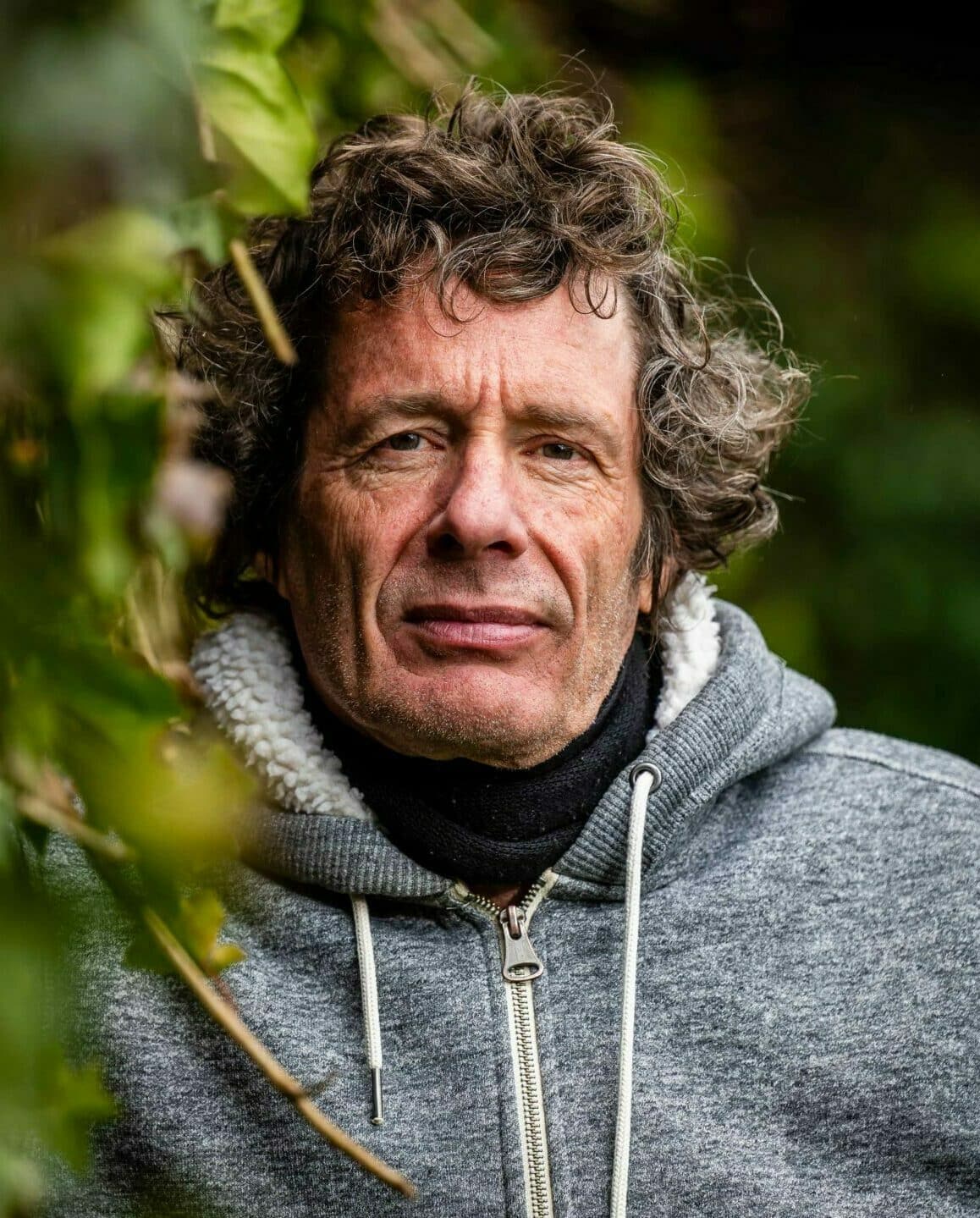 Biologist Dirk Draulans: 'Less cute animals also deserve attention, because they are often the canary in the coalmine when it comes to the collapse of biodiversity'
Biologist Dirk Draulans: 'Less cute animals also deserve attention, because they are often the canary in the coalmine when it comes to the collapse of biodiversity'“We categorise animals according to how cuddly they are,” Draulans adds. “In the US, someone once founded Equal Rights for Parasites, but it was not a huge success. Unfairly, by the way, because global warming is causing masses of parasites and fungi to become eradicated. Less cute animals also deserve attention, because they are often the canary in the coalmine when it comes to the collapse of biodiversity.”
Cuddly or not, humanising animals is not a good idea, says Dekkers: “If we think that the cat loves us, it’s because we first ‘petted’ that love into it. Many people love their animal because they hope that the animal will return the love. It’s like a teddy bear: it’s as dead as a doornail, but if you pet it enough, it will return love. That cat? Well, he sees his owner as a failed fellow cat at best. Sometimes, the misunderstanding is obvious, and people and animals find each other. Sometimes it isn’t, and we cause a massacre.”
Evolution, not revolution
In short: between love for pets, animal welfare and animal rights, there are fifty shades of grey and quite a few paradoxes. This multitude of profiles is also reflected in the political landscape. In the Netherlands and Belgium, all parties, from right to left and everything in between, have discovered the animal as a niche.
“But that certainly does not imply they all have the same intentions,” fears Janneke Vink. “For example, right-wing parties are shouting about the protection of pets and ideas for an animal police, but when it comes to livestock farming, you hardly hear them. There is more balance on the left, but parties there are also often ambiguous. When it has a significant impact on negotiations, you often see subjects having to do with animals being dropped first, or become a plaything in the bidding process.”
 Janneke Vink (Dutch Association for Animal Rights): 'Right-wing parties are shouting about the protection of pets, but when it comes to livestock farming, you hardly hear them'
Janneke Vink (Dutch Association for Animal Rights): 'Right-wing parties are shouting about the protection of pets, but when it comes to livestock farming, you hardly hear them'© RDA
“It is a slow process,” Hendrik Schoukens also admits. “The traditions we are dragging behind us are old and established. When I see that in the redevelopment of the Vesdre Valley in Wallonia (1) there are still doubts about returning part of the riverbed to nature, well, then I can only conclude that we are only making small steps forward. Intensive livestock farming will not suddenly cease to exist because we provide legislation for the benefit of animals and because keeping 10,000 pigs on a small area is unacceptable.”
“The Netherlands and Belgium are on the same page – the outlines of which have been drawn up by the European Union,” explains Elien Verniers. “But no matter how little substantive difference there is, the threshold for reporting violations is still lower in the Netherlands. The midfield is stronger, which means active punishment happens quicker. In Belgium, the regionalisation of animal policy has led to positive competition between Flanders, Wallonia and Brussels. The regions encourage each other to keep taking new steps.”
Elien Verniers: 'The Netherlands and Belgium are on the same page, but the threshold for reporting violations is still lower in the Netherlands'
The Dutch and Belgians may have worked hard on legislation, but neither of them are European leaders in animal rights. Unlike in Switzerland or Germany, animals in the Low Countries do not yet enjoy constitutional protection. Schoukens, who is currently working on a book about the rights of the swamp, hopes it will only be a matter of time. “There are many laws which have become progressively stricter. It would now be a logical step to extend that to the constitution as well. It would be an acknowledgment of what already exists, at least partially, for certain animals. Just think of the wolf, or of protected nature. It won’t be a revolution, but it will certainly be an evolution. This way, we make it clear that nature has a part in our legal system, and that we are not alone here.”
Verniers is also pro, “albeit that we have to carefully consider how we formulate things, so that there is some enforceability involved.” Vink suggests “explicitly” including animals in the constitution. “Animal rights activists often point out that animal and nature rights are not the same thing. In principle, it is good that nature is given legal protection – but are fundamental rights suitable for this? That’s the question! The emergence of nature rights is therefore mainly related to the idea that people must be protected: against climate change, environmental pollution and loss of biodiversity. When it comes to animal rights, we should make clear that it’s exclusively about the animal and the true defense of the animal.”
Janneke Vink: 'I hope that animal rights will be strengthened on moral grounds, not on commercial ones'
Or how man remains the measure of all things, especially when it comes to non-human fellow animals. Often we are a curse. Sometimes, fortunately, it is also a blessing. And the latter is what we should strive for no matter what.
“We have to quickly get rid of the idea that we are superior,” concludes Dirk Draulans. “Animal rights have their place in the ever-growing expansion of the moral circle,” says Hendrik Schoukens. “I sincerely hope that animal rights will be strengthened on moral grounds, not on commercial ones,” says Janneke Vink. “For example, I would be very disappointed if we only produced cultured meat because it is cheaper. There is progress, yes, but we continue to have an asymmetrical relationship with animals. There is still too much distance between what people morally strive for and what they actually do.”


